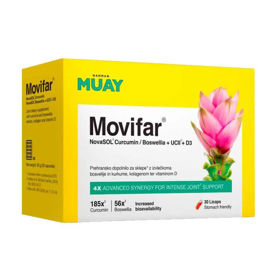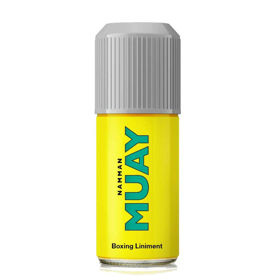Vprašanje stranke:
Kaj bi lahko pomenila pekoča bolečina za kolenom?? Vprašanje anonimne stranke
Odgovor farmacevta:
Pekoča bolečina za kolenom je lahko posledica številnih različnih vzrokov, od preprostih poškodb do bolj zapletenih zdravstvenih stanj. Eden od pogostih vzrokov za pekočo bolečino za kolenom je vnetje. To se lahko pojavi zaradi prekomerne uporabe tega sklepa, ponavljajočih se gibov ali prekomerne obremenitve kolena. Vnetje kite (tendinitis) ali burz (bursitis) je pogosto povezano z aktivnostmi, kot so tek, skakanje ali drugi športi, ki vključujejo intenzivno gibanje kolen. Vnetna stanja lahko povzročijo draženje in otekanje, kar vodi do pekoče bolečine.
Drug možen vzrok je poškodba mišic ali vezi. Na primer, poškodba zadnjih stegenskih mišic (hamstrings) ali Ahilove tetive lahko povzroči bolečino za kolenom. Te poškodbe so pogosto posledica nenadnih gibov ali prekomerne obremenitve med vadbo. Mišične napetosti ali natrganine lahko povzročijo ostro, pekočo bolečino, ki se poslabša pri gibanju.
Ciste, kot je Bakerjeva cista, so še en možen vzrok pekoče bolečine za kolenom. Bakerjeva cista pomeni nabiranje tekočine v sklepni kapsuli za kolenom, ki lahko povzroči otekanje in bolečino. Ta cista je pogosto povezana z drugimi težavami, kot so artritis ali poškodbe meniskusa. Pritisk ciste na okoliška tkiva lahko povzroči pekočo bolečino, ki se poslabša med gibanjem.
Artritis je kronično vnetje sklepov, ki lahko prizadene kolena in povzroči pekočo bolečino. Osteoartritis in revmatoidni artritis sta dve glavni obliki artritisa, ki lahko vplivata na kolenski sklep. Osteoartritis je degenerativna bolezen, ki povzroči obrabo hrustanca, medtem ko je revmatoidni artritis avtoimunska bolezen, ki povzroča vnetje sklepov. Obe stanji lahko povzročita bolečino, togost in otekanje, ki se lahko občuti kot pekoča bolečina za kolenom.
Težave z živci, kot je utesnitev živca ali nevropatija, lahko povzročijo pekočo bolečino. Sciatični živec, ki poteka skozi zadnjico in nogo, lahko povzroči bolečino, če je utesnjen ali poškodovan. Ta bolečina se pogosto opisuje kot pekoča in lahko sega od zadnjice do zadnjega dela kolena in naprej.
Tromboflebitis ali globoka venska tromboza (DVT) je resno stanje, pri katerem se krvni strdki tvorijo v globokih venah nog. To lahko povzroči bolečino, oteklino in rdečico za kolenom. Tovrstna bolečina je lahko pekoča in je nujno potrebna takojšnje zdravniške oskrbe, saj se strdek lahko premakne v pljuča in povzroči življenjsko nevarno stanje, kot je pljučna embolija.
Če doživljate pekočo bolečino za kolenom, je pomembno, da poiščete zdravniško pomoč, še posebej, če je bolečina huda ali dolgotrajna. Skrb za zdravje kolen in preprečevanje poškodb vključuje redno vadbo, raztezanje, pravilno ogrevanje pred vadbo in izogibanje preobremenitvi. Čeprav je pekoča bolečina za kolenom lahko zaskrbljujoča, je s pravočasno diagnozo in zdravljenjem mogoče obvladati večino vzrokov in zmanjšati bolečino.
Ali opornice lahko pomagajo pri bolečem kolenu?
Opornice so pogosto uporabljene za podporo bolečemu kolenu in lahko pomagajo pri lajšanju bolečin, izboljšanju stabilnosti in pospešitvi okrevanja pri različnih poškodbah in zdravstvenih stanjih. Vendar je njihova učinkovitost odvisna od vrste bolečine, vzroka težave in pravilne uporabe opornice.
Opornice zagotavljajo dodatno podporo in stabilnost, kar je še posebej koristno pri poškodbah vezi ali mišic. S tem se zmanjša tveganje za nadaljnje poškodbe. S kompresijo in omejevanjem gibanja lahko zmanjšajo bolečino in otekanje. Kompresija izboljša prekrvavitev, kar pospešuje celjenje. Opornice lahko pomagajo ohranjati pravilno poravnavo kolena, kar omogoča varnejše in bolj učinkovito gibanje. To je še posebej pomembno pri športnih aktivnostih ali rehabilitaciji po operaciji. Redna uporaba opornic med aktivnostjo lahko zmanjša tveganje za ponovne poškodbe, kar je ključno za športnike in aktivne posameznike.
Opornica mora biti pravilno nameščena, da zagotavlja ustrezno podporo in ne povzroča dodatnih težav. Pretesna opornica lahko omeji prekrvavitev, preohlapna pa ne zagotavlja zadostne podpore. Opornice so pogosto najbolj učinkovite v kombinaciji z drugimi oblikami zdravljenja, kot so fizioterapija, zdravila proti bolečinam in protivnetna zdravila. Čeprav opornice lahko pomagajo pri lajšanju bolečin, dolgotrajna uporaba brez ustreznega zdravljenja osnovnega vzroka težave ni učinkovita. Opornice naj bodo del celovitega načrta zdravljenja.
Zanimivo branje: Bolečina v dimljah na desni strani
Zanimivo branje: Pekoča bolečina v križu








 Facebook
Facebook
 Instagram
Instagram
 info@moja-lekarna.com
info@moja-lekarna.com

